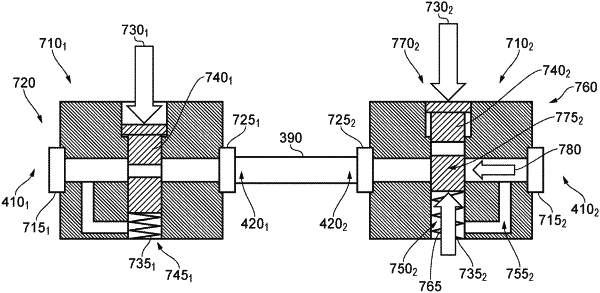| CPC F16K 3/0254 (2013.01) [E21B 17/021 (2013.01); F16K 3/262 (2013.01); F16K 31/1223 (2013.01); F16L 1/20 (2013.01)] | 17 Claims |

|
1. A method of selectively connecting a first fluid communication region to a further fluid communication region at a subsea location, comprising:
biasing a slidable member including a slidable body located, and axially slidable, in a channel within a valve body towards an open channel end of the channel via at least one biasing element disposed at a closed channel end of the channel whereby a slidable member fluid passage extending across the body of the slidable member is non-aligned with a primary passageway extending through the valve body and intersecting the channel, the primary passageway extending from a first port of the valve body connected to a first fluid communication region to a further port of the valve body connected to a further fluid communication region, the slidable body being biased to disconnect fluid communication between the first fluid communication region and the further fluid communication region;
providing a local environmental pressure proximate to the open channel end;
when the local environmental pressure increases beyond a threshold pressure, urging the slidable member towards the closed channel end whereby the slidable member fluid passage and the primary passageway are at least partially aligned thereby fluidly connecting the first fluid communication region and the further fluid communication region;
providing a fluidic pressure within a portion of the channel between the closed channel end and the primary passageway, said portion of the channel being connected to a portion of the primary passageway between the first port and the channel via a flood passage wherein the fluidic pressure is provided by a fluid; and
limiting a maximum displacement of the slidable member towards the closed channel end via an abutment seat on an inner surface of the channel which abuts against an outwardly extended region of the slidable member, said maximum displacement of the slidable member providing at least partial alignment of the through passage and the primary passageway.
|